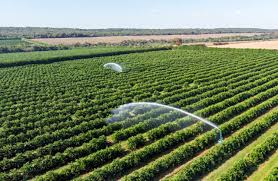The agricultural sector is undergoing a major transformation driven by digital innovation. One of the most significant advancements revolutionizing the industry is the use of Agriculture Farm Management Software. As farms grow in scale and complexity, traditional methods of record-keeping and manual oversight are no longer enough to maintain profitability and sustainability.
By integrating modern Agriculture Software into daily operations, farmers can enhance productivity, reduce operational costs, and significantly improve profits. In this blog, we’ll explore how farm management software empowers farmers to manage their resources more efficiently, make smarter decisions, and thrive in a competitive global market.
What Is Agriculture Farm Management Software?
Agriculture Farm Management Software is a digital platform designed to help farmers plan, monitor, and analyze their farming activities. It provides tools for managing everything from crop planning and soil health to livestock management, inventory tracking, labor scheduling, and financial reporting. Whether you’re running a small farm or a large-scale agribusiness, these tools offer centralization, automation, and real-time insights that can transform the way your farm operates.
Boosting Productivity Through Smart Tools
1. Automated Planning and Scheduling
Manual planning is time-consuming and error-prone. With farm management software, farmers can automate planting schedules, irrigation routines, and harvesting timelines. The software uses historical data, weather forecasts, and soil conditions to suggest the best planting windows, helping maximize yield with minimal guesswork.
2. Centralized Data Management
Instead of managing paper logs or multiple spreadsheets, Agriculture Software centralizes all essential data—crop cycles, fertilization schedules, machinery usage, and labor costs—in one place. This saves time, reduces data loss, and allows for more consistent and accurate record-keeping.
3. Real-Time Field Monitoring
Modern farm software can integrate with IoT devices and drones to provide real-time insights on crop health, pest infestation, and soil moisture. These insights allow farmers to take proactive action, such as adjusting irrigation schedules or applying pesticides only where needed, increasing efficiency while reducing costs.
4. Inventory and Input Optimization
Keeping track of inputs like seeds, fertilizers, feed, and pesticides is crucial to reduce waste. Farm management systems automatically track usage and inventory levels, generating alerts when supplies run low. This helps avoid overstocking or running out of essential resources during critical stages of production.
Driving Profitability Through Better Decision-Making
1. Cost Tracking and Financial Analytics
By tracking every input and output, Agriculture Farm Management Software gives farmers a detailed overview of operational costs and revenue. It allows for the analysis of profitability per crop, field, or season. This level of transparency helps in identifying high-performing crops or areas needing improvement.
2. Yield Forecasting and Market Alignment
Many software platforms come equipped with yield forecasting features that use historical data and weather patterns to predict harvest outcomes. This information allows farmers to align their sales and marketing efforts with demand and pricing trends, ensuring they get the best returns.
3. Resource Efficiency and Reduced Wastage
Efficient resource management directly impacts profitability. By using data to apply fertilizers, pesticides, and water only where and when needed, farmers not only reduce costs but also promote sustainable practices. This kind of precision agriculture is impossible without the support of modern Crop Management Software.
4. Streamlined Labor Management
Farm labor is one of the highest recurring expenses. With built-in labor scheduling and task assignment tools, farm software can help streamline operations, track worker productivity, and optimize shifts. This ensures the right number of hands are available for each task without unnecessary labor costs.
Enhanced Traceability and Compliance
Governments and buyers increasingly demand traceability of food products. Farm management software helps keep detailed logs of all farming activities—chemical applications, irrigation, harvest dates, etc.—which is essential for certifications, audits, and transparency. This not only builds consumer trust but also opens doors to premium markets and export opportunities.
Case in Point: How Digital Management Impacts Real Farms
Let’s take an example of a medium-sized vegetable farm that adopted a digital Agriculture Software platform. Within the first season, the farm saw:
- A 20% increase in yield by optimizing planting and irrigation schedules
- A 30% reduction in input costs through better resource allocation
- Improved worker efficiency by tracking labor time and productivity
- Access to new buyers due to traceable records and compliance reporting
These outcomes directly contributed to increased profitability while improving the farm’s long-term sustainability.
Features to Look For in Farm Management Software
When selecting the right Agriculture Farm Management platform, look for features such as:
- User-friendly dashboard and mobile compatibility
- Real-time data tracking and alerts
- Integration with sensors, drones, and GPS
- Crop-specific tools and forecasting models
- Inventory and input management modules
- Financial analytics and reporting
- Secure cloud storage and data backup
Platforms like Navfarm offer comprehensive solutions that cater to both crop and livestock farming operations. From monitoring field conditions to managing multiple farm locations, Navfarm brings everything under one digital roof, making it an ideal choice for smart farm management.
Final Thoughts
The integration of Agriculture Farm Management Software is not just about keeping up with technology—it’s about creating a more efficient, profitable, and sustainable way to farm. Whether you’re managing crops, livestock, or both, digital tools provide the visibility and control needed to make informed decisions and grow your business.
In an increasingly data-driven world, investing in Agriculture Software is one of the smartest decisions a farmer can make. It’s time to move beyond spreadsheets and guesswork—embrace the future of farming today.

